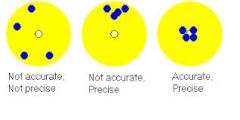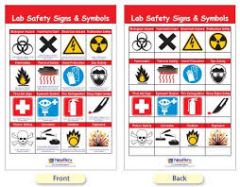![]()
![]()
![]()
Use LEFT and RIGHT arrow keys to navigate between flashcards;
Use UP and DOWN arrow keys to flip the card;
H to show hint;
A reads text to speech;
20 Cards in this Set
- Front
- Back
|
Metric system, SI, mass, meniscus, density |
Metric system: measurement system based on the number 10 SI: Inter, system of units Mass: measure of the amount of matter in an object (Kg) Meniscus: curve Density: Measure of mass contained in a vol. |
|
|
Weight and Volume |
Weight: a measure of the force of gravity acting on an object Volume: the amount of space an object or substance takes up (m3) |
|
|
Why do Scientist use a standard measurement system? |
Allows scientist to compare data and communicate with each other about their results |
|
|
What is length, What is unit |
Length: the distance from one point to another Unit: quantity |
|
|
How do you find the volume of regular and irregular shapes |
Regular: LxWxH Irregular: Immerse object in water and measure how much the water lvl rises |
|
|
How do you measure Density |
Grams divided my cm3 |
|
|
What are the units for celsius and Kelvin |
Celsius: (c) Kelvin: (K) |
|
|
Unit for time? |
Second, (S) |
|
|
Estimate, Accuracy, Precision |
Estimate: approximation of a number based on reasonable assumptions Accuracy: how close a measurement is to the true or accepted value Precision: how close a group of measurements are to each other |
|
|
Diference between Accuracy and Precision |

|
|
|
Mean, Median, Mode, Range |
Mean: avg of a set of data ( add up all #'s then divide by total of #'s) Median: middle # in a set of data Mode: # appearing most Range: set of data ( subtract biggest # from smallest) |
|
|
Anomaulus data |
data that don't fit with rest of data
ex: 20, 30, 22, 21 30 |
|
|
Difference between reasonable and anomalous data |
? |
|
|
graph, nonlinear, linear |
graph: representation of a set of objects where some pairs of objects
Linear: straight line w/ pts on line
Non Linear: curvy line with scattered pts |
|
|
safety symbol |

|
|
|
What should you do when preparing for a lab? |
to take data, safety equip, |
|
|
Most important rule in a lab? |
Follow directions |
|
|
What should you do at the end of a lab? |
Clean up |
|
|
When in the "field" of precautions, why should you take? |
? |
|
|
What should you do if an accident occurs? |
Tell someone: an adult. If serious: 911 etc |

